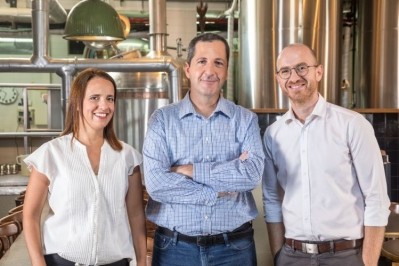Reducing the cost of cell-cultured meat... Growth media in focus

Cell culture media formulas are a closely guarded secret in the nascent cell-cultured meat industry, says Bangalore-based Richcore Lifesciences. However, they typically contain water, amino acids (lysine, arginine etc), sugars (glucose), salts, vitamins, buffering agents, recombinant proteins (albumin, transferrin etc) and growth factors (FGF, IGF, TGF etc), which send signals to encourage cells to do certain things such as proliferate or differentiate.
And catalog prices for the latter can run into thousands of dollars a gram, which is fine if you’re using them to culture cells in a laboratory, but presents challenges if you’re using them to produce tons of meat, said Richcore Lifesciences, which has 15 years’ experience in producing recombinant proteins from various microbial expression systems (such as bacteria and fungi) for the pharmaceutical industry, and is now turning its attention to food.
Getting prices down, says Richcore, which is working with several cell-cultured meat startups, will require a combination of scale (far bigger reactors operating in food-grade – rather than pharma-grade - environments), higher-yielding/more efficient expression systems, and fewer downstream purification steps at the end of the process, as the kinds of 99.9% purity levels required in pharma are not required in cell-cultured meat production.
'In simple terms, they don't need a Ferrari, they are OK with a Ford'
At a basic level, getting economies of scale will make a huge difference, Richcore director of marketing Aditya Ravi told FoodNavigator-USA.
“Nobody is manufacturing these growth factors at, you know, 45-50KL [40,000 to 50,000 liter] fermenters. Right now they're made at a pilot scale [eg. a 250-liter fermenter], so if you get a yield of 2g [of the target protein] per liter, the maximum you can produce from pilot scale is 500g. So if you want to make 10 kilos of these growth factors, you will have to run 20 batches… If I had a 45,000-liter fermenter, I could do 90 kilos in one run."
On the purification side, he said, once you’ve expressed some of these proteins in a microbial host, “maybe you don't need the extensive downstream processing. So let's take recombinant albumin, right, it is okay to have certain fragments of broken protein in the food grade version... so you can skip a few processes and have less intensive downstream processing; but all this requires a lot of back and forth conversations between the cultured meat companies.
"In simple terms," he said, "they don't need a Ferrari, they are OK with a Ford."
Secret sauce
As to which growth factors and proteins are needed it depends on both the cell-type and the animal species, he said, “The medium [formulation] is the secret sauce for these companies. We have a bunch of food grade recombinant proteins and growth factors such as r-albumin, IGF, FGF, EGF, and we’re also looking at product innovation at a species specific level.
"So if a company is making cultured beef, then we could offer them bovine versions of these growth factors [right now, many companies are offering human growth factors, for example, rather than say, bovine ones].”
'We're not starting from scratch...'
So which companies are cell cultured meat startups - most of whom are still operating at the R&D/laboratory scale – working with right now when it comes to growth media?
While established players such as Thermo Fisher and Merck are looking at this area, there are now several companies aside from Richcore such as TurtleTree Labs (Singapore and San Francisco), Future Fields in Canada, ORF Genetics in Iceland, and CellRx in the UK working on growth factors for cell cultured meat, using a variety of expression systems from genetically engineered plants to fungi, yeast, and bacteria.
“But I think we are well positioned because we've been doing this for a few years," said Ravi, who said Richcore is also working with several food companies in the emerging precision fermentation space, offering its R&D, scale-up and manufacturing expertise to help them scale up.
"We're not starting from scratch. We also do a lot of high throughput screening [of microbial hosts] to identify the strains of bacteria, yeast and fungi that will give the best yield of factors.”
GFI survey should help identify challenges and opportunities
Growth media formulations are generally not something cell-cultured meat startups are seeking to patent right now because they don’t want to reveal their secret sauce to the competition, Elliot Swartz, senior scientist at nonprofit The Good Food Institute (GFI), told FoodNavigator-USA.
But there are “probably around 8-10 growth factors and recombinant proteins that are going to be pretty heavily used across the industry, and another 5-10 or so that will probably be less used just because they might be more specific to certain cell types, or stages in the process,” said Swartz, who recently conducted a survey of cell-cultured meat startups and suppliers of media and growth factors all over the world.
The GFI is still wading through the data, said Swartz, but he added: “We want to be able to say how many kilograms of a certain protein are going to be needed by the industry by XYZ year, and I don’t have that number now, but right now [with the industry still in the R&D phase] you only need probably a couple 100 grams or a few kilograms of these key proteins to really service the entire industry.”
And as such, startups in the space could really benefit from “pooled procurement such that suppliers can create large batches that bring economies of scale, and then produce them at a high amount such that they are available at a lower price for all the people in the industry,” he said.
“I think, generally speaking, you wants the price of growth factors and recombinant proteins to be in the hundreds or low 1,000s of dollars per gram, and that's going to be a nice sort of medium term spot and then eventually sub $100 per gram.”
What's the best way to obtain growth factors?
As Richcore highlighted, there are many ways to bring prices down without requiring game-changing tech breakthroughs, but simply through economies of scale and operating under food-grade rather than pharma-grade protocols, he said.
But thinking outside of the box, are there other ways to produce the key components cells need to grow beyond using plants and microbes as recombinant protein expression systems?
Tokyo-based Integriculture, for example, is effectively mimicking the natural processes in the body, whereby organs secrete growth factors which are circulated to other tissues via the bloodstream; so it deploys a central tank containing the cells it wants to grow (eg. muscle, fat etc) and a series of ‘feeder’ tanks that contain other cell types such as liver or placental cells.
The feeder cells secrete growth factors that are then fed into the central tank so that Integriculture doesn’t have to buy in growth factors from third parties.
“I think it's feasible at a small scale,” said Swartz, “but you still have to keep the [feeder] cells alive too. Maybe you can do things to those [feeder] cells to make them just really crank out those proteins really efficiently, but from a cost perspective, it could be challenging.”
Academic researchers still typically using FBS
As for academic research into optimizing cell-cultured meat production, lack of money remains a challenge, said Swartz.
"The academic researchers we fund through our programs at the GFI are still using FBS [fetal bovine serum, the liquid part of blood, a byproduct of the livestock industry, the use of which somewhat defeats the purpose of growing meat without raising animals] because they don't typically have the budget or the means to develop their own serum-free medium formulations.
"All these [private] companies in cell-cultured meat have worked for years now on developing medium formulations and they could patent and license those formulations, and have someone produce them and sell them to the industry, but especially for academic research."
According to the GFI, additional cost reduction opportunities include "developing novel technologies for growth medium recycling, valorizing waste streams or metabolites produced by cells, engineering growth factors with improved properties, and researching how cell culture media components influence the nutritional profiles of end products."
Cell-cultured meat could be cost competitive with some forms of conventional meat within a decade, according to two new studies from Dutch consultancy CE Delft using data from 16 companies* active in the field including five startups, although the authors acknowledge that data gaps exist and assumptions will change as the industry matures (picture credit: Aleph Farms). Read more HERE
- Stay up to date with FoodNavigator-USA's coverage of cell-cultured meat.



















